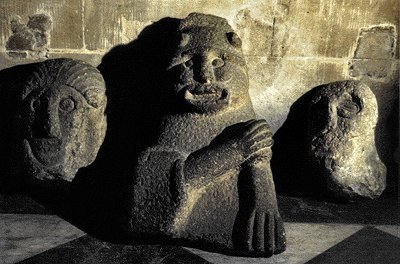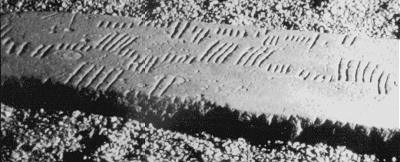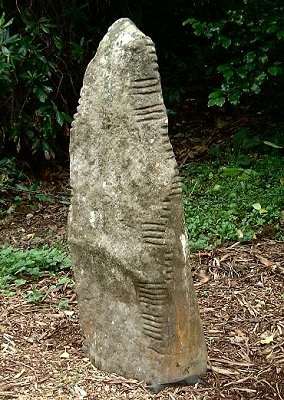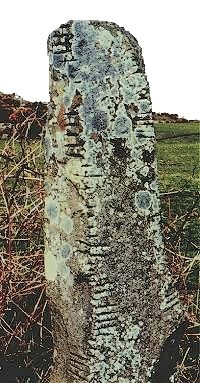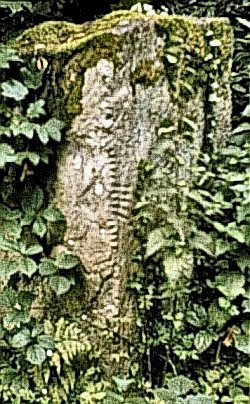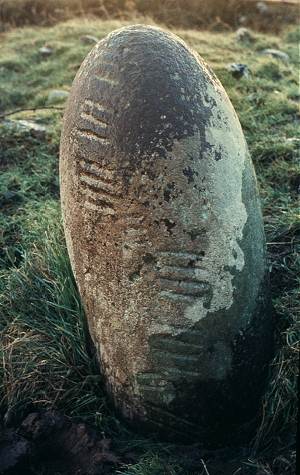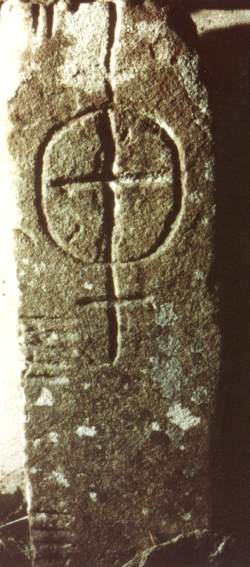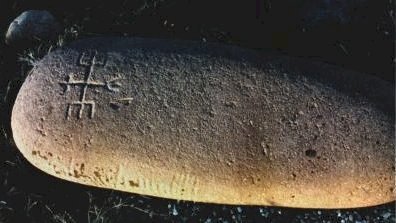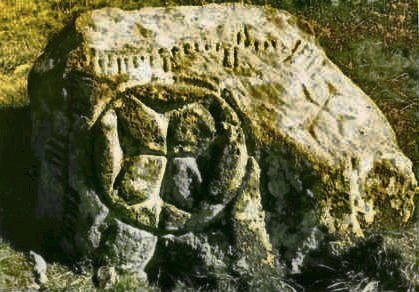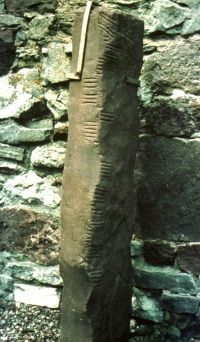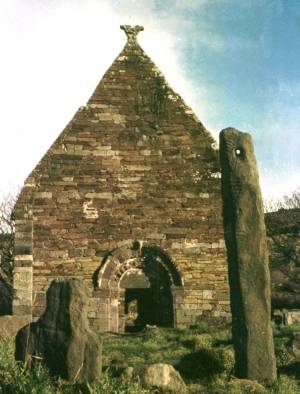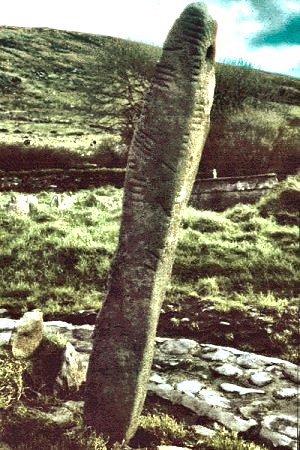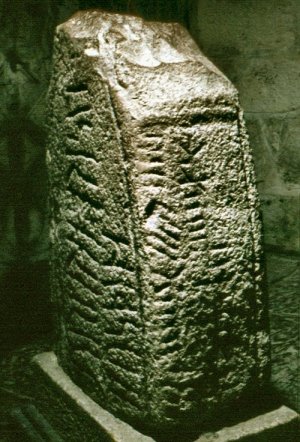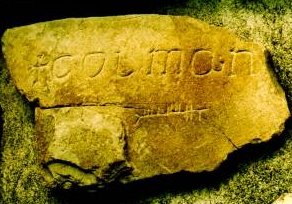|
the
earth-mother's
|

OGAM STONES
& CROSS-PILLARS
|
When ogam or ogham writing was introduced (probably to Ireland from Wales, though perhaps it was the other way round, or yet again simultaneous) just before Christianity arrived, some long-standing stones were used for inscriptions which were mostly memorials of named people. The word 'ogam' is derived from Oigmiú, the smith-god who became the script-god. Another aspect of the smith-god is Nuadú of the silver arm (and horned helmet) whose statue (formerly in Armagh Cathedral) is a motif of this site.
He is
shown holding his prosthesis. His maiming recalls that of Hephaistos,
the smith-god of the Greeks. Ogam, essentially notches, was admirably designed for carving by adze or axe on beams and large chunks of wood as well as by chisel or even axe on stone. The alphabet was designed in four groups of five letters, thus:
Detail of one of several stones at Dunloe, county Kerry
Coláiste Íde, Burnham, county
Kerry Drumlohan, county Waterford Few are now entirely legible, due to weathering and other damage. The letters on the above stone have been enhanced by charcoal, which (unlike chalk) very quickly washes away.
Lugnagappul, county Kerry while three in the Field of Blood (Parc na Foladh) at Lugnagappul on the Dingle Peninsula, are less than one metre high. As with standing-stones and other prehistoric monuments, white quartzite pebbles are at their base. Following
the uniquely peaceful Christianisation of Ireland, it was not
long before Christian crosses appeared on ogam stones. The Dingle
Penininsula has dozens of cross-pillars and cross-inscribed ogam
stones, of all shapes and sizes.
Ballinvoher, county Kerry
Ballintaggart, county Kerry
Arraglen, county Kerry - with quartzite pebbles Maumanorig, county Kerry
Ratass, county Kerry
In Killaloe Cathedral (county Clare) there is a bilingual stone bearing a dedication to a Norse warlord in Old Norse runes and ogam,
while at the great monastery of Clonmacnois one of the many gravestones or pillow-stones for deceased monks bears the name Colman in both ogam and modern characters.
Ogam faded
out after the arrival of Christianity, and pillar-stones became
more elaborately carved with cruciform and cycliform designs.
These are discussed on the page entitled Kilfountan, county Kerry
|


